Find Out If Your Child Has Flat Feet – Follow These 3 Simple Steps!
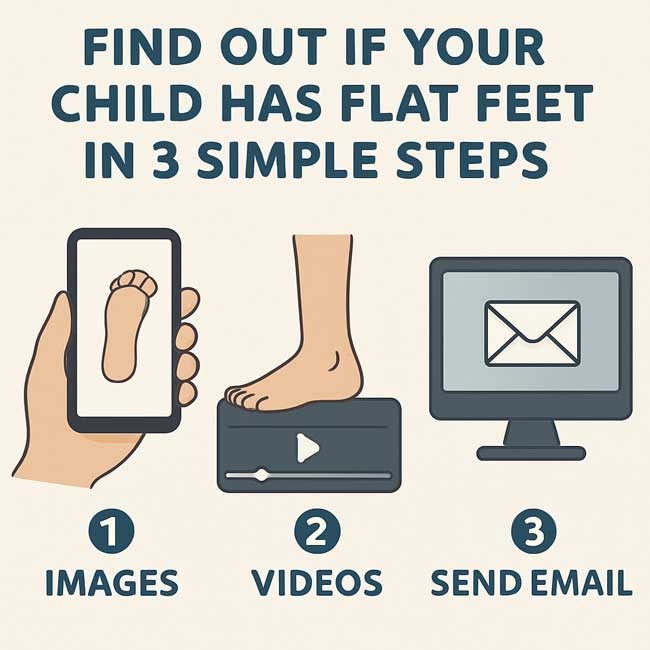
Did you know that most kids naturally start out with flat feet? This happens because of a soft “fat pad” in their arches, making their feet look flat in early childhood. As children grow—usually by age five—many develop visible arches. However, some kids continue to have flat feet due to genetics or other underlying conditions. While flat feet can be perfectly normal, in some cases they may cause pain, fatigue, or trouble walking. As a professional children’s shoe fitter with over a decade of experience assessing kids’ feet, I’m here to help you figure out whether your child has flat feet and what steps you should take next. I even offer a free virtual foot evaluation to give you peace of mind and guidance on the best footwear options.
Find Out If Your Child Has Flat Feet in 3 Simple Steps
First Step. Have your child stand barefoot on a flat, hard surface (avoid carpet), standing tall and looking straight ahead. Take clear side photos of both feet, just like the examples below. These images will help me see whether your child has high, normal, low, or no arches at all.
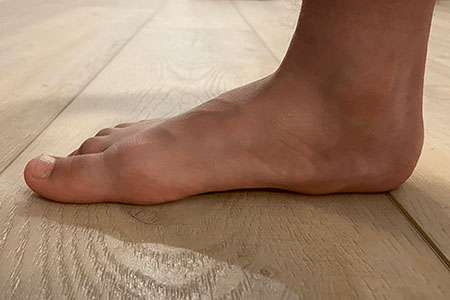
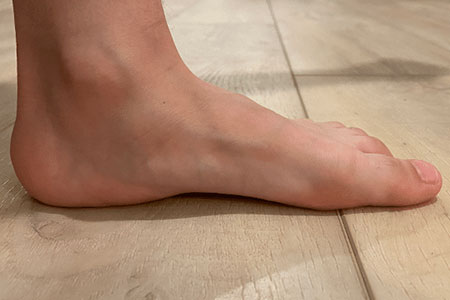
If you prefer, you can follow the instructions in this video to also determine your child’s foot shape and for better visualization purposes.
Second Step. With your child standing on a flat surface and looking straight ahead, step behind them and take a clear photo of their feet from the back, just like the examples below. This view will help me see whether your child’s heels are in a neutral position, tilting inward (everted), or tilting outward (inverted).
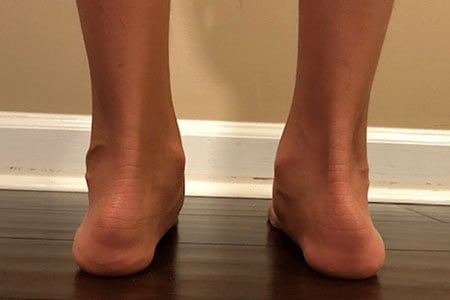
Third Step. Email me the images of your child’s feet: fittingchildrensshoes@gmail.com and feel free to include any additional images/videos that will help the visualization process.
This service is free of charge and it will take me less than 24 hours to respond with whether your child has flat feet or not. This resource should be used as a guide, not a substitute for professional advice.
The Complications of Having Flat Feet
Don’t worry if you’ve discovered your child has flat feet—it’s a very common condition and often runs in families. Still, even if your child isn’t in pain, flat feet shouldn’t be ignored. Supporting your child’s feet properly can help prevent future issues with walking, balance, or fatigue. The best way to help is by choosing the right type of shoes, and in some cases, adding orthotics for extra support, depending on how pronounced your child’s flat feet are.
The impact of Supportive Shoes: Before and After Images
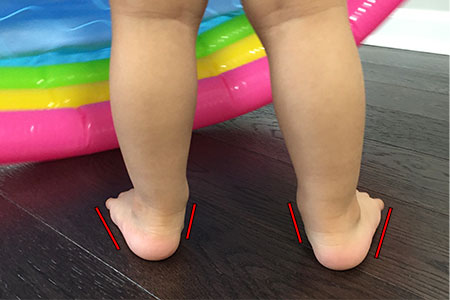
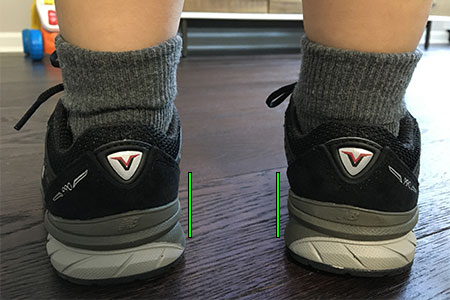
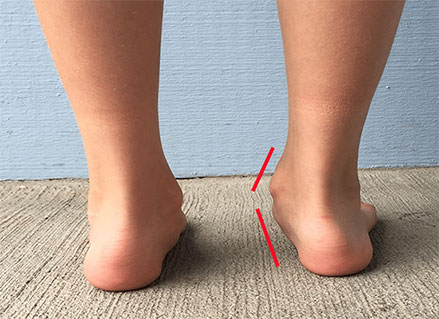
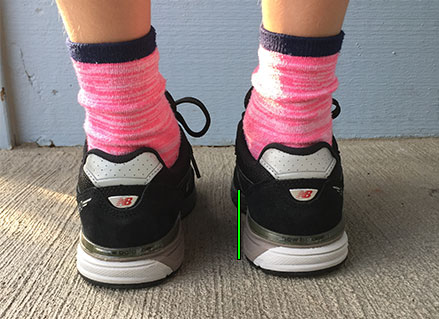
What Are the Best Shoes for Kids with Flat Feet?
Proper footwear is crucial for managing flat feet in children. It supports the arch and promotes better foot mechanics. Children with flat feet can benefit greatly from wearing shoes designed for their specific needs. I have compiled a list of supportive top shoe options that cater specifically to flat feet.
While many children have flat feet and notice no problems and require no treatment, others may experience the following symptoms:
- Your child might complain about how their feet tire easily
- Painful or achy feet, especially in the areas of the arches and heels
- The inside of your kids’ feet might become swollen
- Back and leg pain

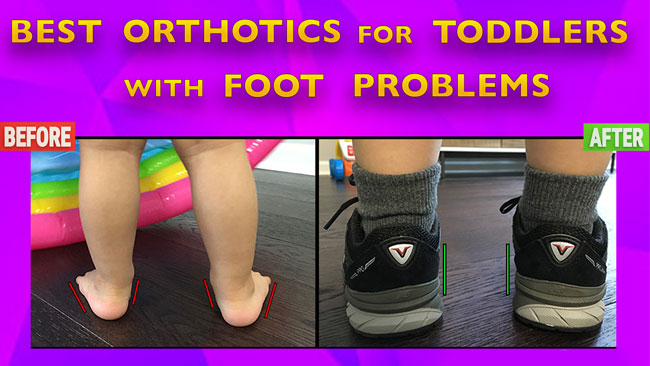
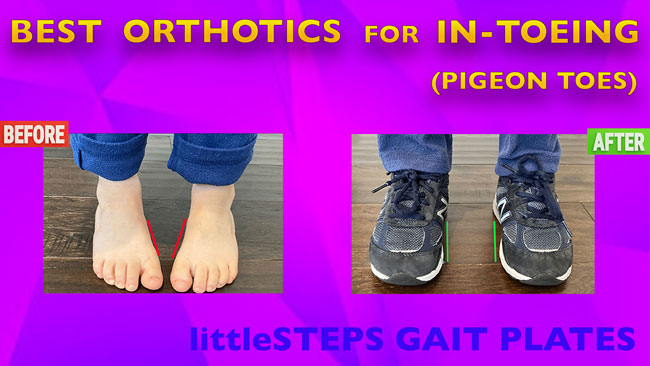
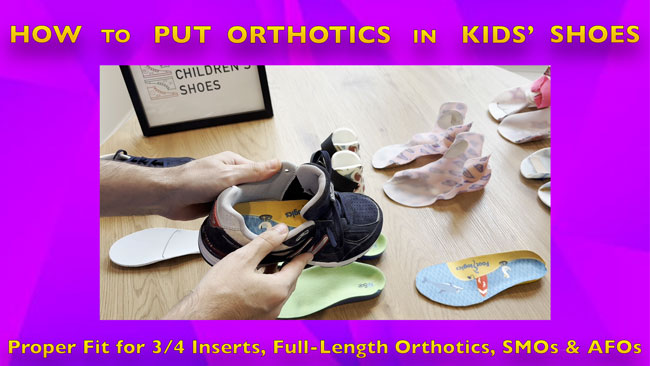
Hi can you help me with my son he is 7 years old and he have problem with walking, he have a lot of pain he has wider toes and flat feet, his shoes size is 3 can you recommend a suitable shoes for him , thank you I will appreciate your help.?
Hello Amara,
Sure, I am happy to help.
Below you can find a selection of shoes that provide substantial outsoles, firm heel counters, and they are available in wide (W) and extra wide (XW) widths. You didn’t specify whether your son has wide or extra wide feet.
Option 1
Option 2
Option 3
Let me know if you have any other questions.
Hello I see my girl have a deformation in her foot when looking at Google is has a foot flat please Can you help me please
Hello Schedena,
In order to recommend specific shoes for your daughter I need to know whether your daughter has narrow, medium, wide, or extra wide feet. If you don’t know your daughter’s foot shape I suggest that you follow the instructions here:
How to Measure Your Kids’ Foot – 2 Simple Steps to Determine Foot Length and Foot Width
Thank you for this informative article, Juan. Can you please let me know what’s the brand of the shoes that are shown in the images above? I would like to purchase them for my child. Thanks in advance
Hello Caro,
The children in the images above are wearing New Balance shoes. However, not all New Balance shoes are effective in helping treat children with flat feet and rolled ankles, only specific styles. In addition, most New Balance shoes can fit children with medium, wide, or extra wide feet, but they won’t fit children with narrow feet.
If you already know your child’s foot shape and want to see a selection of the best shoes for children with flat feet I suggest that you refer to the article below:
The Best Shoes for Kids with Flat Feet – STOP Your Kids Foot Pain!
I hope this helps!